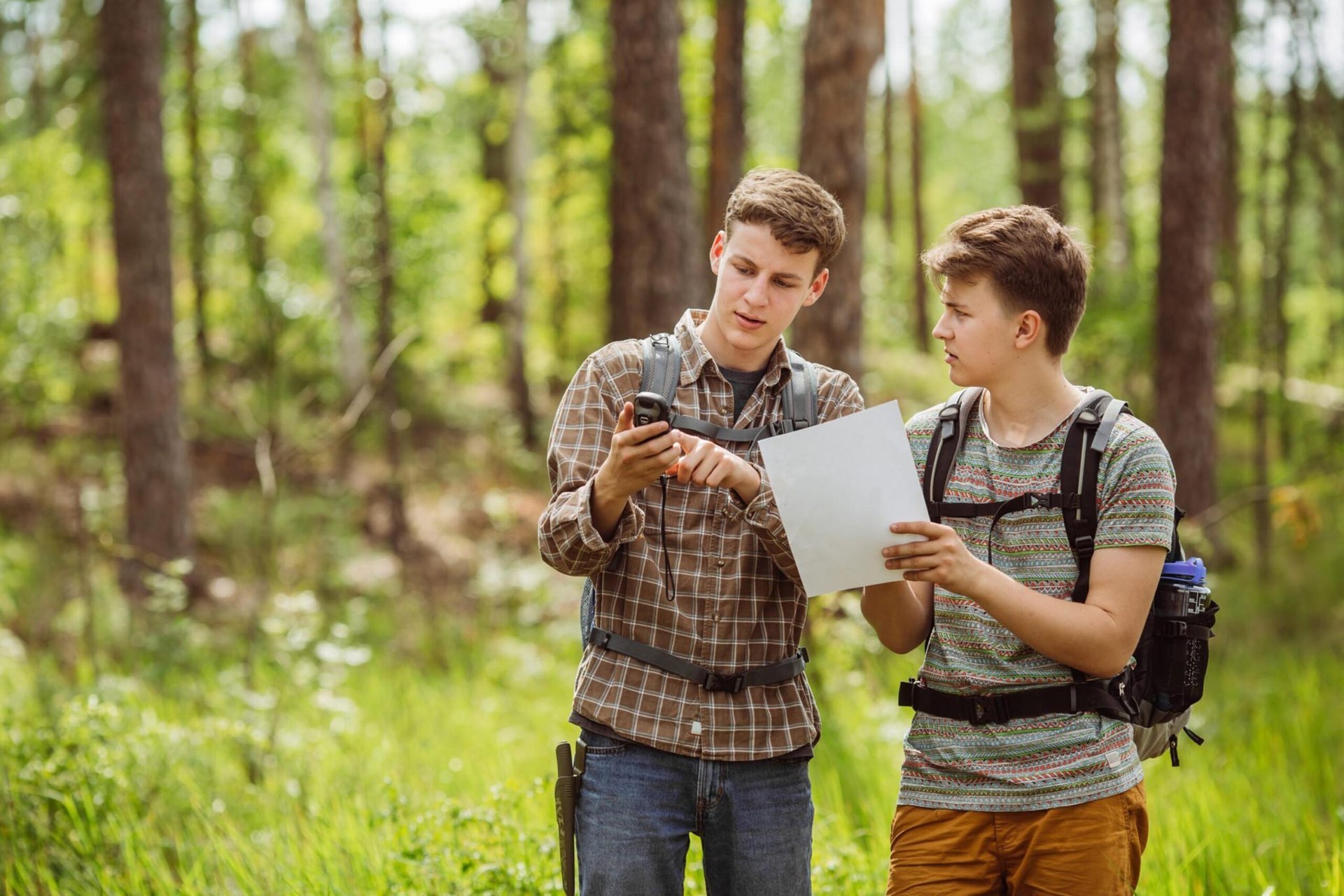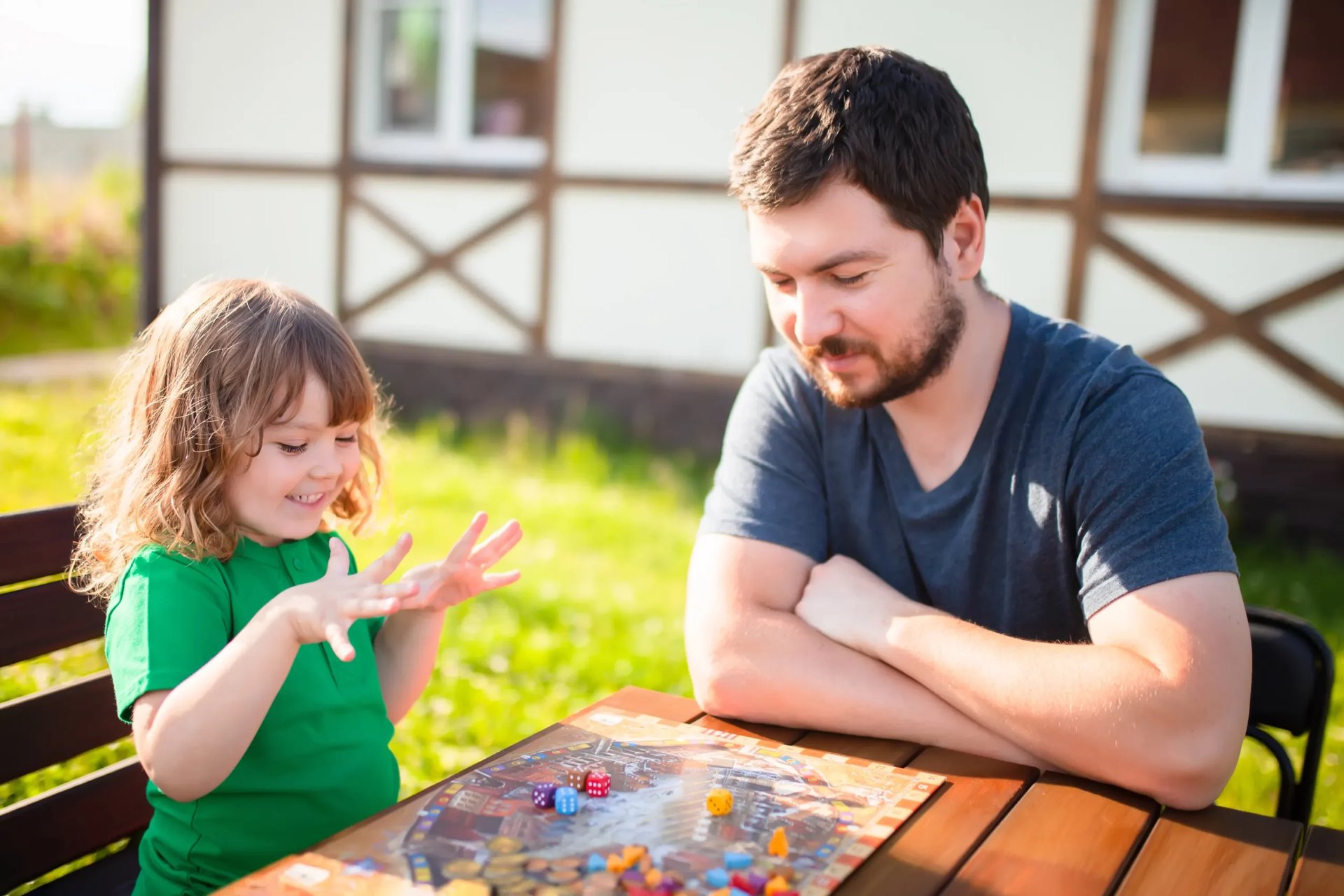
DIY Geocaching: A Modern-Day Treasure Hunt for Families
Looking for a fun outdoor activity that brings the family together? Geocaching is a modern-day treasure hunt perfect for all ages. Our guide will show you how to start your adventure, using just a smartphone and some curiosity. Get ready to explore!
Key Takeaways
- Geocaching is a global treasure hunt where families use smartphones or GPS devices to find hidden containers, called geocaches, in various locations like parks, trails, and cities.
- It’s a free activity that encourages outdoor exploration and physical activity while teaching kids problem-solving and navigation skills through fun and adventure.
- Families can start their geocaching journey by creating a free account on a geocaching platform, downloading the app, choosing a cache to find based on its difficulty level suitable for children between 1.5 to 2.5.
- Inside each geocache is typically a logbook where finders sign their names; some caches also include small items for trade meant to be exchanged thoughtfully.
- Logging finds online after exploring the contents of the cache and signing the logbook helps maintain an accurate record of discoveries and fosters community engagement among participants worldwide.
Defining Geocaching: A Modern-Day Treasure Hunt
Geocaching transforms the everyday environment into an adventurous treasure map where technology leads the way. Participants, known as geocachers, use GPS devices or smartphones to locate hidden containers called geocaches.
These caches can be nestled in local parks, along nature trails, tucked away in city streets, or even submerged underwater. The thrill of discovery drives this modern-day quest as explorers navigate to specific coordinates in search of their prize.
Once found, a geocache reveals a small trove typically containing a logbook for finders to sign and sometimes small trinkets for trade. Geocachers then log their discovery online at websites like www.geocaching.com, sharing their experience and possibly exchanging items within the cache.
This digital record-keeping is part of what makes geocaching an ongoing global game—one that requires nothing more than a spirit of adventure, a GPS-enabled device like an iPhone or Android smartphone, and a free account on a geocaching platform to join in the fun.
The Appeal of Geocaching for Families
Families often search for activities that everyone can enjoy together, and geocaching fits the bill perfectly. It transforms an ordinary day into an exciting adventure, leading families through hidden trails and revealing lesser-known woodland areas.
This activity promotes teamwork as family members collaborate to solve clues and find caches. Moreover, it’s a great way for kids and adults alike to practice problem-solving and develop navigation skills in a fun setting.
With just a smartphone and a free geocaching account, families can embark on these modern-day treasure hunts without straining their budgets. Geocaching encourages exploration of the outdoors, steering participants away from screens and encouraging physical activity.
The thrill of discovering a cache fills both young explorers and adults with a sense of achievement. Every find is an opportunity to learn something new about the local area or nature, making each outing educational as well as entertaining.
Geocaching Basics
Geocaching basics entail understanding what a cache is, exploring the contents it holds, and using GPS coordinates to locate it. For more detailed insights into this exciting activity of modern-day treasure hunting, we encourage you to read on.
What is a cache?
A cache is a hidden container that’s part of the worldwide game of geocaching. People use GPS coordinates to find these containers in various locations, from city parks to remote wilderness areas.
Caches come in many sizes and levels of difficulty. Some are tiny, barely larger than a film canister, while others might be as big as an ammunition box filled with items for trade.
Inside these containers, geocachers often find logbooks where they sign their names to prove they found the cache. They may also discover trinkets or toys they can exchange. Using only a smartphone and a free account on a geocaching app or website makes this adventure accessible to everyone.
What’s inside a geocache?
Geocaches often hold a logbook or sheet of paper, allowing finders to leave their mark by recording their name and the date they discovered it. This practice connects geocachers from around the globe, sharing moments of joy through simple signatures.
Some caches may also include small trinkets or souvenirs for trading. The unwritten rule encourages participants to exchange items thoughtfully, ensuring what they leave has equal or greater value than what they take.
Explorers might stumble upon various objects inside a geocache—ranging from wayward geocoins seeking new adventures to quirky toys waiting to delight the next child that uncovers them.
Each item tells a tale of its journey, with some moving across cities or even borders through the hands of fellow geocachers. As part of geocaching etiquette, these exchanges maintain a sense of wonder and connection among those participating in this global treasure hunt.
Getting Started with Geocaching
Embark on your geocaching adventure by creating an account, downloading the app, and choosing a cache to find. Start the search, locate the cache, check out its contents & sign the logbook – then be sure to log your find and post a message for others to see.
Creating an account and downloading the app
To get started with geocaching, you’ll need to create a free account and download the geocaching app on your smartphone. The process is straightforward; simply sign up for a free basic membership or consider upgrading to a premium plan for more challenging options.
Once you’ve created an account, the app provides access to numerous easy-to-find geocaches at no cost, equipped with details about the cache’s size and difficulty level. For families embarking on this adventure, it’s recommended to begin with caches rated between 1.5 and 2.5 in terms of difficulty.
By utilizing a smartphone and downloading the geocaching app, families can explore the world of modern-day treasure hunting without any additional expenses beyond the device itself.
Choosing a cache to find
After creating an account and downloading the app, it’s time to choose a cache to find. Geocaches can vary in size and difficulty, with ratings ranging from 1.5 to 2.5 for family-friendly adventures.
These hidden treasures can be located in parks, nature trails, underwater, and city streets. With geocaching apps like “Geocaching” or “Cachly,” you can easily search for nearby caches based on location and level of challenge.
Geocaches come in different forms such as traditional, mystery/puzzle, multi-caches (which involve multiple waypoints), or event caches for community gatherings; selecting one that suits your group will make the adventure more enjoyable!
Starting the search and finding the cache
Now that you’ve chosen a cache to find, it’s time to start the search and locate the geocache using your smartphone. Follow the compass on the app and head in the direction it points.
Once you’re close, keep an eye out for potential hiding spots such as under loose rocks or behind trees. When you find the cache, carefully examine its contents, sign the logbook inside, and then log your find on the app.
Checking out the contents & signing the logbook
Geocaching enthusiasts find hidden treasures containing logbooks and assorted trinkets. After locating a cache, geocachers open it to examine its contents, ensuring that the items are left undisturbed before signing the logbook.
This simple yet essential step documents their discovery while also respecting the cache’s integrity. It’s an exciting moment as families discover what’s inside and leave something of equal or greater value for future treasure seekers.
Logging the find and posting a message
After checking out the contents and signing the logbook, it’s essential to log your find and post a message. Logging your find is crucial for maintaining an accurate record of discovered geocaches.
This process not only marks your successful discovery but also helps other geocachers in verifying the cache’s existence and condition. It fosters community engagement within the world of geocaching while sharing valuable information about each location.
When you’ve found a cache, take out the logbook or sheet of paper from inside the container. Then, use your own pen to meticulously write down your name and date of discovery on the logbook.
Afterward, head to the app or website to officially log your find by providing details about your experience and posting a brief message for others who are yet to embark on this adventure.
Geocaching with Kids: A Guide for Beginners
Geocaching with kids is an exciting and educational adventure suitable for families. As a beginner, start by creating a free account and downloading the Geocaching app on your smartphone.
Choose geocaches with difficulty levels between 1.5 to 2.5 for kid-friendly experiences. Once you’ve selected a cache, embark on the search together, exploring parks, nature trails, or city streets.
Get hands-on by checking out the contents of the hidden cache and signing its logbook. After finding the treasure, make sure to post your success message online to share in the excitement with other geocachers.
When geocaching with kids, it’s important to remember that these outdoor activities provide more than just fun – they also offer valuable opportunities for learning about navigation and teamwork while making lasting memories as a family.
Educational Benefits of Geocaching
Transitioning from geocaching with kids to its educational benefits, it’s clear that geocaching offers more than just a thrilling outdoor activity. Geocaching is an engaging way to introduce children to practical and academic learning experiences.
This modern-day treasure hunt serves as an educational tool that fosters problem-solving skills while encouraging physical exercise.
Geocaching not only promotes teamwork, but it also develops navigation abilities and critical thinking skills in participants. As families engage in this activity, they are exposed to real-world scenarios that require them to think on their feet, enhancing their decision-making capabilities.
Moreover, the use of GPS technology encourages a deeper understanding of map-reading and location tracking.
Making Lasting Memories with Geocaching
Geocaching creates lasting memories for families, fostering teamwork, problem-solving, and navigation skills. The shared thrill of discovering hidden treasures builds bonds and provides a fun outdoor activity suitable for children of all ages.
Geocaching also offers an opportunity to explore new places while engaging in a modern treasure hunt using technology.
As we transition to the next section on educational benefits, it’s important to note that geocaching not only enhances critical thinking but also encourages exploration and discovery.
Get ready to embark on an exciting family adventure with DIY geocaching. Uncover hidden treasures, navigate through scenic trails, and create unforgettable memories with your loved ones.
With just a smartphone and a sense of adventure, you can begin your geocaching journey today. Start exploring the great outdoors and discovering hidden gems in your area!
FAQs
1. What is DIY geocaching?
DIY geocaching is a fun, outdoor treasure hunt where families use their iPhones or other devices to find hidden “treasures” or caches.
2. Can we do geocaching without paper maps?
Yes, you can enjoy paperless geocaching by using an app on your iPhone which guides you to the treasure locations without needing physical maps.
3. How do we protect our phones from spam bots and spammers while geocaching?
To keep your device safe from spam bots and spammers during your adventure, make sure to use trusted apps for geocaching and avoid clicking on suspicious links.
4. Do cookies affect how we play DIY Geocaching?
Cookies mainly impact how websites track your activity online; they shouldn’t directly affect your game of DIY Geocaching unless they slow down your phone’s performance. Always clear cookies regularly for optimal device function.



